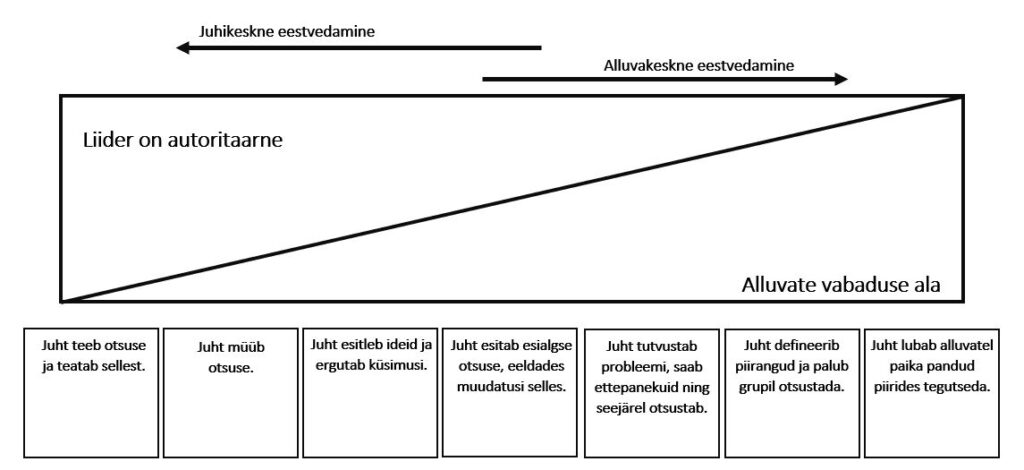I have long since promised several clients to write about the 7 steps of engagement. This is not only about the managers, but also about those who are being managed and who expect more involvement or the other way round – the manager deciding things for himself (for example, one client said of a very inclusive manager: ‘But what’s the point of him then? A useless woman!”)
On Thursday, we talked about engagement on the podcast and at the end I described the 7-step model I use on this topic. A little more on this now.
Involvement is NOT ON vs NOT A situation where a worker is involved or not.. Inclusion or broken down into 7 different steps and moving up and down the stairs is just like moving up and down the stairs – one step at a time, and different staff and managers will have different levels depending on their capabilities, their level of confidence, but above all their resources. Whether that resource is the ability to think for oneself in a focused way, or whether life events are such that it is not possible to put as much mental resource into the work as is needed for the highest level of engagement.
Also, a leader’s internal resources may not be such that he trusts enough, because he would rather control life, even micromanage. This is a matter of the leader’s own self-confidence and it is crucial that the leader has engaged in his or her own personal (mental) development to the point where he or she is able and capable to act at any level of involvement. If the leader himself is afraid of total trust, he needs to work on his own inner growth.
Inclusion is for me a decision about how much freedom to decide on the a manager to give to his or her team or staff. The degree of freedom includes responsibility. Often the expectation of team members is to be involved, but involvement always means responsibility. Responsibility, on the other hand, is a balance of rights and responsibilities. If we want rights, we have to accept responsibilities. If we have responsibilities, we must also have rights.
The figure below (Tennenbaum-Schmidth leadership continuum) shows the 7 levels of inclusion.
- The first level describes a situation where the manager has made a decision and simply communicates it to his team members, i.e. it is the TRANSMIT level.
- The next level is the MAKING level, where the manager has made a decision but justifies it to team members to support the development of the individual to understand the bigger picture.
- At the third level, the manager still has a decision to make, but he encourages employees to ASK, to express their opinions and views, but still stands by his decision. At this level, the worker has already developed a broader view and his or her own ideas because of level 2.
- At the fourth level, the manager has a decision and a clear vision, but as a result of the team’s thoughts, opinions and suggestions, he or she is ready to change and will change all or part of the decision. The game must acknowledge the vulnerability and capacity of the leader to really make better decisions.
- At the fifth step, the manager does not have a decision (should not have one, otherwise it is a ‘libacoaching’) and only presents the problem, perhaps discusses with the team members the root cause of the problem, the team members make suggestions which are discussed together and the manager makes the final decision.
- At the sixth step, the team members are already free to take their own decision, and the leader agrees, but it is up to the leader to bring in, for example, any broader views that the team members may not know. But a leader does not direct a decision towards one side or the other through his or her positional power.
- At the seventh level, the leader is no longer involved in the implementation of the decision, but in the team or organization (or e.g. with an individual), extremely general rules of the game have been set and within these rules, the team members have the right, responsibility (with a balance of rights and responsibilities) to decide and act for themselves. The manager may not know, and most probably does not know, how things are done and why.

I would also add the 8th step, the co-creation step, where the leader and the team member are at the same level and step in their daily life. The role of the leader at this stage is management without leadership, where the leader is merely a token of the common purpose, but is completely freed from organisational matters and from managing people in the classical sense in all his roles (holding and explaining the plan, organising, influencing people and controlling the plan and its results).
If a leader wants to involve team members or a person wants to be involved, it is necessary to understand what the level of experience is and move step by step from there. If the aim is to reach the point where the whole team takes responsibility and becomes autonomous (e.g. step 7), but team members are used to the answers that have been given so far, the journey will take time and there must be space and time for experience at each step. It takes around 2-3 months per step for a person to move from one step to the next. If there are few management situations, then longer.
This is also one of the reasons why, in the context of major paradigm shifts, organisations are replacing the vast majority of key team members. While it used to be that the manager told everything in advance and now the direction is set to find new growth, where team members have to find solutions to problems and implement them themselves, moving from one extreme to the other can take 2-3 years to start showing results. Movement between the rungs is not one-way, people fall back due to various life events, some may remain ‘stuck’ for longer, etc.
For this reason, it is sometimes easier for a new manager to replace a larger part of the team, as it will be quicker to get the results that the manager is valued and expected to deliver. Also when the need (e.g. in a reorganisation) is to move back to the 1. or 2nd steps up, but so far it was 6. or stage 7 (e.g. growth stage).
As my leadership experience in several teams has been to change the culture to one that is inclusive and self-motivated and self-driven, it has inevitably been necessary to change team members who were used to the leader telling them how things were done. I’ve made a few enemies, some of whom still don’t say hello on the street 10 years later. However, sometimes a manager has to make decisions based on the development needs of the organisation that break an individual or that particular team.
And this journey is also taking place in teams where employees have their first work experience. This is very often the case for service jobs in the retail sector. For the first job experience, the manager must consciously adopt the attitude that it is his or her job to teach the person to gradually take responsibility. People who come from a directly timetabled school system, who do not have the experience of taking on responsibilities at home (e.g. a child driven everywhere), simply do not have the habit of independence. That doesn’t mean they don’t have that potential. It just needs to be opened.
In the school system (including university), things are very much organised – what subjects to take, where to go and when, what homework to do by when, etc. I can see this myself when giving lectures at university, that the most important thing is clarity about homework, the rules for attending lectures and other organisational details (especially at undergraduate level). On the content side, people are very flexible, but if there is no secure pre-arrangement, these people feel anxious and, when they fail later on, always find some thing that was not agreed beforehand and therefore put them in an unsafe situation and therefore the “culprit” is easily found.
The degree to which the team as a whole or the individual people in the team are subconsciously given this degree depends on their ability to handle the task and the leader’s ability to trust or delegate responsibility. In addition, it depends on the development cycle of the specific organisation and/or team. In a growth phase, where new ideas need to be constantly generated, the degree of freedom of subordinates should be as high as possible. When it comes to declining or contracting activities, more centralisation and a more authoritarian management style are needed.
Authoritarian and autocratic models of governance have tended to collapse quickly in history, ending in revolution or the end of very many human lives, either physically or mentally. Authoritarian leaders believe that they hold the truth and they are fiercely committed to standing up for it, and to proving other people wrong, whether more politely or less politely. Unfortunately, life has many more shades, and lack of information will cause such systems to topple sooner rather than later.
That is why I am a great believer in an approach in which the manager clearly acknowledges that he or she cannot possibly have all the information needed to make the best decisions, and that this information is only known to his or her team members, who also pass on the necessary information to each other via the network. There is no such thing as the right decision anyway, and it is worth talking about decision making in a completely separate article.
In the context of organisations, authoritarian leaders are not as big and as bloody as national ones, but the emotional damage of working for such a leader is irreparable.
However, some of these leaders can glide through life very smoothly, constantly picking up a circle of loyal close subordinates who can’t cope without an authoritarian, all-knowing leader, or who find it too difficult to manage independently. I know one leader who is a really pleasant and nice person on a human level, but when it comes to taking on a leadership role, he puts on a stiff mask and invites people on his carpet to solve something with him, but by its very nature it also means physically sitting on his throne and gathering people on the other side of the table and then forcefully reciting answers from a booklet. Before, of course, doing an engagement where everyone has a say (in the order he says, of course).
But it works too, because he is really successful in those organisations that need to be restructured, and there are always such periods in an organisation’s development. Its involvement at level No 1. This is also inclusion.
But as the podcast said, inclusion is an overrated and overused concept. Inclusion as a concept has become distorted. It’s as if someone is in front (the leader) and pulling someone along, or getting someone involved. Co-creation or Grade 8 is where we could be heading. The 7 steps of inclusion are just a stepping stone.

